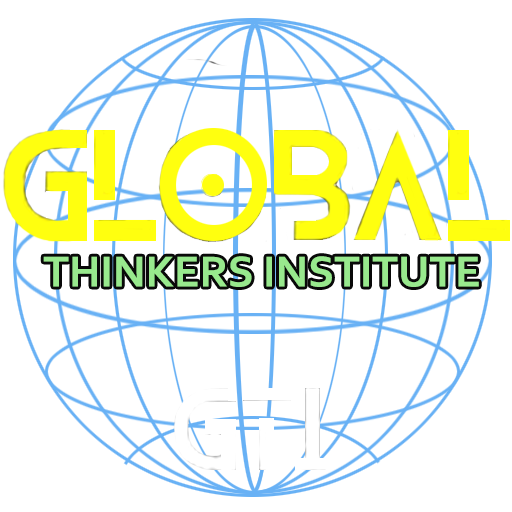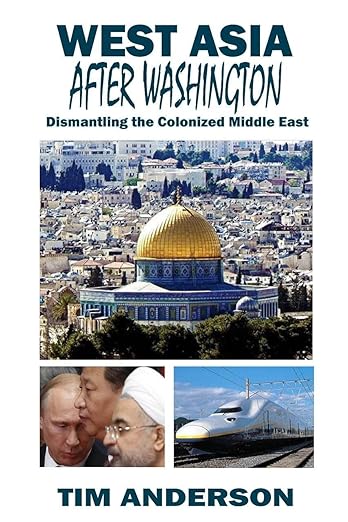At the turn of the century, Washington launched a series of invasions and proxy wars against all the peoples and independent states in the region, in the name of creating a ‘New Middle East’. The attacks involved mass propaganda and the use of large numbers of terrorist proxy forces, mainly sectarian Islamist groups armed and financed by Washington and its regional allies, especially Saudi Arabia, Qatar, Turkey, and Israel. Resistance to these regional wars led to the formation of a loose regional bloc, led by Iran, which now has more substantial ties with a broader counter-hegemonic bloc led by China and Russia, especially BRICS and the Shanghai Cooperation Organization (SCO).
West Asia After Washington discusses how, as the various wars Washington waged for a conquered “New Middle East” failed, the global order began to shift against the North American juggernaut. China replaced the United States as the world's productive and economic center, and new global organizations competed with those created by Anglo-American countries. It is in this global context that we must understand the future of the Arab and Islamic countries of the Middle East, which is now often called West Asia, as a reflection of this new orientation.
This alliance, among other things, creates what North American intelligence has long feared and called an ‘Iranian land bridge’, stretching to the Mediterranean in the west and to China in the east. The ‘land bridge’ between East Asia and Europe is centered on Iran, the largest independent state in the region and, from a Zionist perspective, considered to represent “the most serious long-term existential threat to Israel” because it forms a united resistance front. to support the occupied Palestinian people.
This book discusses the war of hegemonic decline, the roots of Western fascism, the decline of Zionists, the Kurdish card in Syria, the purge of Christians from the 'New Middle East', the betrayal of Yemen, and takes us into Syria's Idlib. Then they looked to the future, taking into account Washington's strategic setbacks, the legacy of slain Iranian Commander Qassem Soleimani, and the possibility of eliminating Israeli Apartheid and lifting the siege on Syria and its restoration. Iran's land bridge to China, Iran's Resistance Economy, regional integration, and the challenges of multipolarity provide insight into the West Asia region after Washington
West Asia After Washington is a book written by Dr. Tim Anderson. A Counter-Hegemony theorist, Australian. In its latest research, the team analyzed almost all current events in the Middle East, including the shift from the USA to the Ind-Pacific.
At the turn of the century, Washington launched a series of invasions and proxy wars against all the peoples and independent states in the region, in the name of creating a ‘New Middle East’. The attacks involved mass propaganda and the use of large numbers of terrorist proxy forces, mainly sectarian Islamist groups armed and financed by Washington and its regional allies, especially Saudi Arabia, Qatar, Turkey, and Israel. Resistance to these regional wars led to the formation of a loose regional bloc, led by Iran, which now has more substantial ties with a broader counter-hegemonic bloc led by China and Russia, especially BRICS and the Shanghai Cooperation Organization (SCO).
West Asia After Washington discusses how, as the various wars Washington waged for a conquered “New Middle East” failed, the global order began to shift against the North American juggernaut. China replaced the United States as the world's productive and economic center, and new global organizations competed with those created by Anglo-American countries. It is in this global context that we must understand the future of the Arab and Islamic countries of the Middle East, which is now often called West Asia, as a reflection of this new orientation.
This alliance, among other things, creates what North American intelligence has long feared and called an ‘Iranian land bridge’, stretching to the Mediterranean in the west and to China in the east. The ‘land bridge’ between East Asia and Europe is centered on Iran, the largest independent state in the region and, from a Zionist perspective, considered to represent “the most serious long-term existential threat to Israel” because it forms a united resistance front. to support the occupied Palestinian people.
This book discusses the war of hegemonic decline, the roots of Western fascism, the decline of Zionists, the Kurdish card in Syria, the purge of Christians from the 'New Middle East', the betrayal of Yemen, and takes us into Syria's Idlib. Then they looked to the future, taking into account Washington's strategic setbacks, the legacy of slain Iranian Commander Qassem Soleimani, and the possibility of eliminating Israeli Apartheid and lifting the siege on Syria and its restoration. Iran's land bridge to China, Iran's Resistance Economy, regional integration, and the challenges of multipolarity provide insight into the West Asia region after Washington

